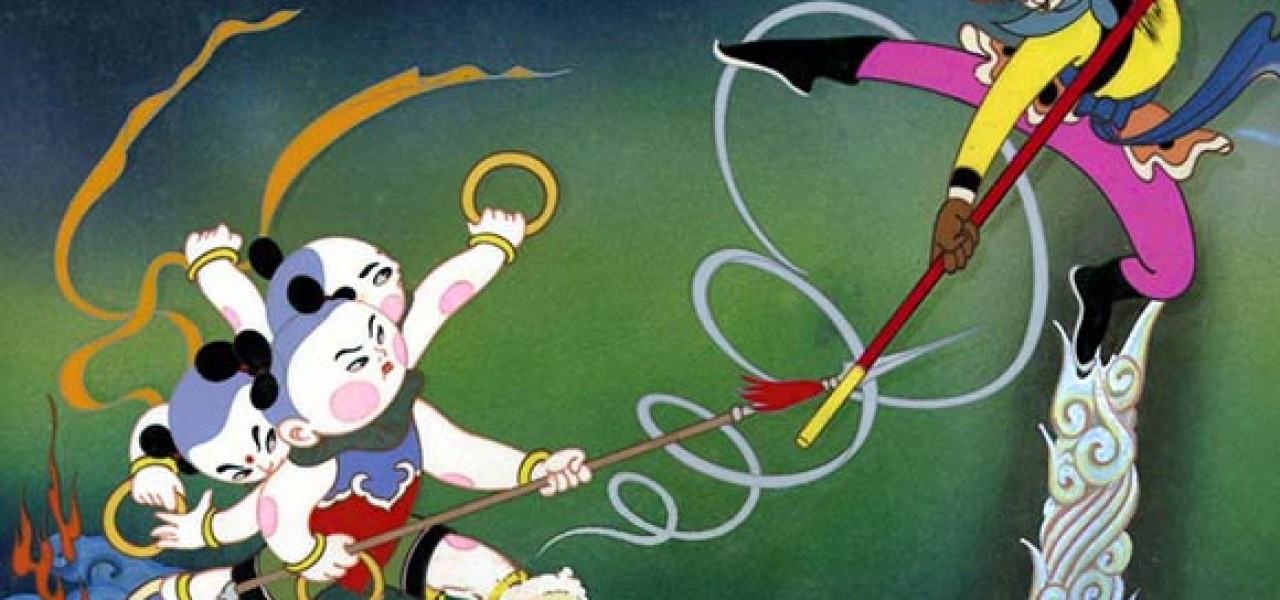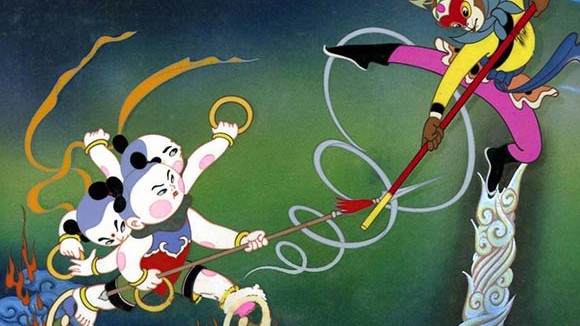

Book Review: ‘Chinese Animation: A History and Filmography’

Chinese Animation: A History and Filmography, 1922-2012
by Rolf Giesen
(McFarland, 216 pages, pub. date: Jan 2015)
Buy: $52.25 on Amazon
China is becoming one of the powerhouses in contemporary animation. In recent years the country has received attention from both Disney and DreamWorks, and it is also home to a flourishing indie animation community. Despite this, the broader history of Chinese animation has not been given a great amount of ink as far as English-language scholarship is concerned. With Chinese Animation: A History and Filmography, 1922-2012, Rolf Giesen has made an ambitious attempt to remedy this, with a near-century’s worth of material, from the beginnings of the medium to 2012.
Most of the book consists of chronological capsule summaries for films and series, interspersed with contextualizing historical overviews. All the milestones are here: China’s first animated feature (Princess Iron Fan, 1941), first color animation (Little Hero, 1953) and first animation for adults (Butterfly Spring, 1983). The most fascinating result of this chronology, however, is that we see the relationship between Chinese animation and the turbulent history of twentieth-century China.

As Giesen tells it, the story begins in the early 1920s, when the four Wan brothers, who shared a background in shadow theater and subsequently moved on to set-painting for films, saw one of Fleischer Studios’ Koko the Clown shorts. Giesen tells us that Chinese artists regard imitation as homage rather than plagiarism, and the early forays of the Wan brothers were unabashed imitations of Fleischer cartoons.
But while the stylistic influences may have been American, the nascent Chinese animation industry found bountiful source material closer to home. Wu Cheng’en’s 1592 novel Journey to the West was and remains a source of inspiration. As Giesen notes, the novel’s mischievous Monkey King emerged to be an approximate Chinese equivalent to Mickey Mouse.
The 1930s and 1940s saw a flurry of propaganda cartoons directed at Japanese invaders and Chiang Kai-shek, after which the animation of China began to truly blossom. Giesen identifies the period from 1957 to 1965 as “the first prosperous time for Chinese animation.” This was the decade of such full-color extravaganzas as Havoc in Heaven, which told the story of how the Monkey King got on the wrong side of the divine Jade Emperor.

But this two-part film was a casualty of its times. The second half, which was finished in 1964, had its release delayed as a result of the Cultural Revolution. Reportedly, the authorities interpreted the Monkey King’s rebellion against heaven as a coded attack on Chairman Mao.
The company behind the film, Shanghai Animation Film Studio, was shut down by the Red Guard. The studio’s director, former political cartoonist Wei Te, was forced to write a public apology disowning his career before being banished to work on a farm. The catastrophic effect of the revolution on Chinese art is reflected in the book’s tiny chapter on the 1970s, which covers a scant 12 productions, only three of which were released before 1976, the year of Chairman Mao’s death.
China’s animation industry essentially had to start afresh following this blow, but was later bolstered when foreign producers began outsourcing to Chinese companies, including the revived Shanghai Animation Film Studio.
Globalization also had a negative effect on the Chinese animation industry: competition from Japan and America. Between 2005 and 2006 the Chinese government clamped down on broadcasts of foreign animation, allowing native cartoons such as Blue Cat and Pleasant Goat and Big Big Wolf to thrive.
The book’s ninth and final chapter, on the animation of the 21st century, takes up more than half of the book. This is the point at which Chinese Animation begins to read less like an engaging history and more like a reference textbook – the inevitable result of covering so many pieces of animation in such a short space, without the distance in time necessary to give a satisfying historical context.
Giesen divides this chapter into a number of subcategories: TV series, feature films, commercials, web animation and so forth. Somewhat surprisingly, the section on student films ends up as the longest by a considerable margin. The student projects are covered to varying levels of detail, some with full transcripts, others with one-sentence descriptions. The author is not a native English speaker, and his occasionally odd wording makes a few of the synopses confusing to read.

Chinese Animation is reasonably well illustrated. It is primarily black and white, but contains an eight-page gallery of color stills. This section offers a gorgeous sampling of several classic films, demonstrating how Chinese animators blended indigenous artistic styles with the influence of foreign studios such as Russia’s Soyuzmultfilm (although exactly why the pioneering 1979 feature Nezha Conquers the Dragon King is illustrated with a reproduction of Hokusai’s “The Great Wave off Kanagawa” is unclear).
As a history, Giesen’s book could have been livelier; as a reference work, it could have been clearer. But this is not a fatal flaw, and Chinese Animation: A History and Filmography, 1922-2012 is a great starting point for anybody who wants to learn about the contributions made by China to our beloved medium.
Order Chinese Animation: A History and Filmography, 1922-2012

.png)